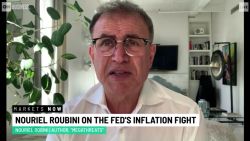The stunning downfall of the FTX exchange, one of the biggest and most reputable players in the market for digital assets, is sparking alarm among people who own cryptocurrencies as investors run for cover.
There are still many unanswered questions. But two big ones loom: How far will the damage spread? And can the beaten-down crypto industry bounce back?
Industry insiders are debating whether to call the implosion of FTX, which filed for bankruptcy on Friday, a “Lehman moment,” referring to the 2008 collapse of the investment bank that sent shockwaves around the world. Many think it’s an apt comparison.
What’s clear is that the fallout from the FTX crisis injects significant volatility into the crypto ecosystem. The episode has destroyed confidence and emboldened regulators, which are now on high alert.
“This was one of the most trusted entities in the crypto space, so it will take some time to recover,” said Jay Jog, co-founder of the blockchain startup Sei Labs, which is based in California.
From best-in-class to bankruptcy
“Sh*tstorm.” “Insane.” “Chaos.”
Those are terms crypto investors and pundits have used to describe the failure of FTX, which was launched in 2019 by Sam Bankman-Fried, a 30-year-old wunderkind once hailed as a modern-day J.P. Morgan.
The company was valued at $32 billion in its latest funding round, and had recruited high-profile backers including SoftBank, Tiger Global, Singapore’s Temasek, as well as celebrities like Tom Brady, Gisele Bündchen and Naomi Osaka. Its name is on the arena where the Miami Heat play.
This week, investor Sequoia Capital said it had marked the value of its FTX stake down to $0. The exchange — said to be short between $8 billion and $10 billion — was unable to meet customers’ withdrawal demands. Bankman-Fried resigned Friday and FTX filed for bankruptcy protection in the United States after a bailout from rival Binance fell through.
“Everyone’s a little bit in shock,” said Shan Jun Fok, co-founder of Moonvault Partners, a crypto investment firm based in Hong Kong. “A lot of people trusted FTX as the gold standard.”
He compared the collapse of FTX to Enron, the 2001 corporate fraud scandal that resulted in the surprise bankruptcy of the US energy company.

The situation is still developing quickly. But one concern is how it could ripple throughout the entire crypto sector, which was worth more than $1 trillion in August.
Over the summer, as digital assets tumbled in value, Bankman-Fried put up about $1 billion to bail out firms and shore up assets to try to keep the entire industry afloat. Now, few white knights are left to rescue FTX and others in distress.
“The number of entities with stronger balance sheets able to rescue those with low capital and high leverage is shrinking within the crypto ecosystem,” strategists at JPMorgan said in a note to clients this week.
The demise of FTX could produce other casualties. It’s hard to know at this point who is exposed, though there are clear ripple effects.
Prices of bitcoin and ether, the two most-held cryptocurrencies, are more than 20% lower over the past week. The price of the Solana digital coin has also been battered thanks to reports that Bankman-Fried’s trading firm, Alameda Research, had sizable holdings. The Tether stablecoin, which is supposed to be a safe place to park cash, recently broke its one-to-one peg to the US dollar. And crypto lending platform BlockFi said Thursday that it was pausing customer withdrawals.
Traditional investors have also been burned, though they’re reassuring clients they can handle the fallout. The Ontario Teachers’ Pension Plan said that despite uncertainty, losses tied to its $95 million investment would have a “limited impact,” given the stake represents less than 0.05% of total assets.
Changpeng Zhao, the CEO of Binance, tweeted that he had been messaging with Nayib Bukele, the president of El Salvador, which has gone all in on bitcoin. “We don’t have any Bitcoin in FTX and we never had any business with them,” Zhao relayed from Bukele. “Thank God!”
Can the crypto industry survive?
Analysts note that a lot of risky activity has already been flushed out of the system after a tumultuous few months.
But as spooked investors pull funds from crypto, more pain could arrive. JPMorgan believes bitcoin could fall to $13,000, a decline of nearly 22% from where it is now. Fok said the digital coin could drop below $10,000, a low it hasn’t plumbed since 2020.
In that climate, the “crypto winter” is poised to get even worse, especially as fears about the broader economic backdrop continue to erode the appetite for risky assets.
“In the short term, this is going to be really, really bad for the crypto industry,” said Jog of Sei Labs. But he doesn’t think it will “end things” entirely, and is hopeful that it could bolster interest in his business, which focuses on building more transparent, decentralized crypto exchanges.
Fok said he expects the FTX collapse will push institutional investors away from the crypto space just as they had been warming up to it. While some people will continue to work on interesting projects, it could take years to restore faith in the sector’s promise.
It’s also all but certain to embolden regulators to tighten the screws, raising costs for crypto firms that survive the unfolding purge.
“It reinforces the view that any sort of financial enterprise needs extensive regulation,” said James Malcolm, head of foreign exchange strategy and crypto research at UBS. “Probably by 2024, the whole world will look much more coherent and watertight.”
Gary Gensler, head of the US Securities and Exchange Commission, said on CNBC Thursday that while the crypto space is regulated, investors “need better protection.” The Wall Street Journal has reported that the SEC and the US Justice Department are investigating FTX. (The Department of Justice declined to comment.)
At a conference in Indonesia on Friday, Binance’s Zhao said that the 2008 financial crisis is “probably an accurate analogy” for what’s playing out.
“We’ve been set back a few years,” he said. “Regulators rightfully will scrutinize this industry much, much harder, which is probably a good thing, to be honest.”
— Allison Morrow contributed reporting.

























